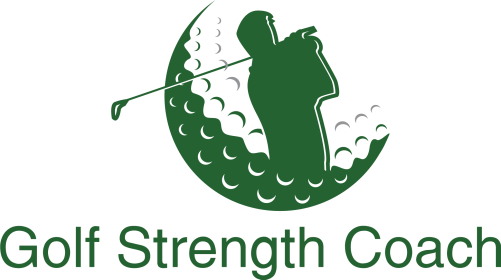 Not only is the barbell squat the king of golf exercises, it is the king of ALL exercises.
Not only is the barbell squat the king of golf exercises, it is the king of ALL exercises.
It is also an exercise that even experienced gym goers tend to avoid.
The squat is often misunderstood and maligned by the personal training community. I’ve seen plenty of actual trainers offer excuses for their clients to avoid training the squat.
Before I dig into it further, first let me give credit for this discussion where it is due… Much of what follows may be found in The Barbell Prescription, my personal fitness bible.
Now, let’s define the squat.
A squat is an exercise in which a weight is held stationary in some form, and the hips are lowered and raised.
Bodyweight squats involve no additional weight. In this form, it is simply the bodyweight of the trainee the constitutes the load.
A slightly more difficult squat is the goblet squat, where a weight such as a dumbbell is carried by the hands close to the chest.
The barbell squat employs the use of a barbell to provide the load. There are a number of variations of barbell squats that lifters may employ.
These include the front squat, overhead squat and the back squat.
For our purposes, we are going to refer to a version of the back squat known as the low bar back squat as the squat.
The more popular version is the high bar squat, where the bar rests on top of the traps. The low bar version, to referred to as “the squat” places the barbell below the spine of the scapula.
We prefer the low bar squat because it engages more muscle mass than any other version, when performed correctly.
This is because the placement of the bar lower on the back forces a more horizontal back angle as you descend into the squat, in order to keep the barbell over the center of the foot.
As a result, more muscle mass is recruited over the longest range of motion, thus causing the most stress on the body, which then drives the greatest adaptation.
A correct, full squat occurs when the hip joint drops below the top of the kneecap.
If you fail to drop down to that level, you have not performed a full squat. Instead, you have performed a partial squat.
While trainees can partial squat with far more weight than they can full squat, they are training less muscle mass, and therefore, placing less stress on the body to create the strength adaptation we desire.
The squat is a natural human movement pattern
One of the big reasons we love the squat as part of any strength training program is because it is a natural human movement pattern.
At one point or another, every human being has squatted.
In fact, in some cultures, squatting is second only to standing as the most common posture.
Unfortunately, in wealthy cultures, many people get away from squatting.
As a result, they can suffer from major quality of life issues due to an inability to get up out of a chair or off of a toilet.
Here are the other reasons we love the squat…
- It is safe. Performed correctly, it is simply a loaded version of a natural human movement pattern.
- If offers a wide range of dosing. Training can start with as little as a partial bodyweight squat and go from there.
- The squat is a compound exercise involving multiple joints. No other exercise recruits as much muscle through a large range of motion.
- The squat will help you get healthier by having a positive effect on metabolism, skeleton and neuromuscular system.
The squat is the best exercise for golfers
In the past, I used to label the deadlift as the best exercise for golfers, given the number of muscle groups it engages.
However, I now place the squat first, and deadlift second.
The simple reason is that the squat drives more strength adaptation than any other exercise.
Consider this formula… Power = Force x Velocity
Strength is the ability to produce force against resistance.
The squat individually can make you stronger than any other exercise. Therefore, it gives you greater potential to produce force.
This becomes critical as we age because our bodies naturally slow down over time.
Also, our range of motion diminishes as we age as well, as our connective tissues stiffen.
However, we can still train for strength at an advanced age, and therefore we can still preserve some of our power.
Given that we generate power in the golf swing from the ground up through the use of our legs, glutes and back, all of which are trained by the squat, there is no better exercise for golf.
All this is why the squat is the cornerstone of any legitimate strength training program.
If you are ready to start your strength training journey, be sure to check out some of the equipment I use personally.

